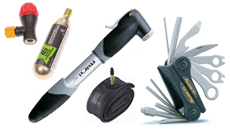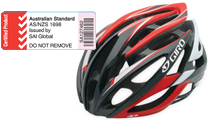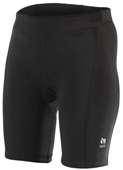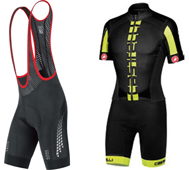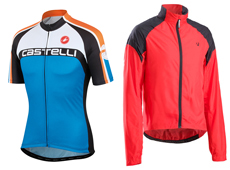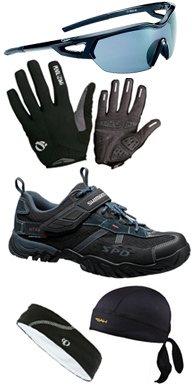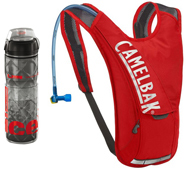RIDER INFORMATION
Consider the tracks and trails
The tracks and trails we will traverse will essentially be unsealed with varying degrees of difficulty from wide open gravel sections through to one wheel tracks. The usual bumps and jumps will feature along with some sand and maybe even some water to spice things up.
The terrain we will cover would not be considered a technical or traditional mountain bike course by the mountain bike aficionados, though it will have sections that will be challenging and at all times complemented by magnificent scenery as we travel through the beautiful South West.
THE RIGHT MOUNTAIN BIKE
Dual Suspension?
A full (dual) suspension bike is not considered essential for our event and whilst full suspension bikes demonstrate a significant advantage on the downhill race track and on a corrugated surface, the Telethon Challenge trail will be adequately negotiated with a front suspension only bike. Needless to say the bike you enter should be in good roadworthy / off road condition and must be safety checked by your local bicycle mechanic or by a member of our mobile workshop team prior to the start of the event.
If you do not have a bike, our event supporter Rock ’n Roll Mountain Biking, has a large range of MTB available for hire.
 |
EQUIPMENT / ACCESSORIES
Be sure to pack a range of spares. Enough to cover all of the bikes in your team, (on a shared where possible basis.) As a basic guide please note the following suggestions.
Cleaning
We all know that clean bikes go better so make sure you have the gear to keep everything running smoothly.
A bike wash down area will be set up each evening by the workshop crew, but you might want to carry your own cleaning gear for flexibility.
|
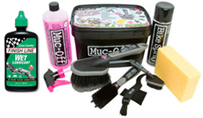 |
|
General Equipment
Spares
|
|
WHAT TO WEAR
A helmet is essential for your own safety and it may save your life. Wearing a helmet is also a legal requirement in Western Australia. Invest in a good quality helmet and ensure that it fits correctly and that the straps are adjusted for a snug fit. Your helmet must comply with Australian Standards and be in good condition. It will be inspected as part of the scrutinising process. |
|
Clothing
Days can be warm to hot and cool in the evenings. Prepare for your ride by packing appropriate clothing according to the weather forecast provided.
Cycling Shorts
Fortunately technology has a way of making bicycle riding more comfortable for our nether regions.
Investing in some good cycling shorts will make your days much more enjoyable. So what should you look for? First up, you generally have four main options: Knicks, bib shorts, mountain bike shorts and skin suits. We'll start with the two most popular options: Knicks and mountain bike shorts.
|
Knicks |
|
| Mountain bike shorts Mountain bike shorts, or baggies, look like any other pair of shorts you would wear out and about, but are generally worn over a pair of Knicks or have Knicks sewn into the inside. Many touring cyclists who aren't that comfortable strutting about town in tight Lycra prefer to wear a pair of mountain bike shorts over their Knicks. They can also be worn without Knicks if you really don't want some padding around your seat. The shorts have seamless crotches and don't have seams down the inner thigh to prevent friction. |
|
| Bibs
Bib shorts are similar to Knicks, but are held up with a bib (Lycra suspenders over the shoulders) rather than an elastic waist. Many road cyclists prefer these because they prevent the shorts slipping down at the back as well as prevent elastic cutting in under our stomach rolls. Skin suits |
|
Material
These days, almost all Knicks are made from Lycra or Spandex and these materials provide a nice tight fit and reduce irritation caused by your thighs rubbing on loose material or the saddle. They're also more aerodynamic. Importantly, the tight fit will keep the chamois close to your body. Basically, you don't want this part slipping about or you'll end up with some very sore skin.
Chamois
The chamois is the most important part of your cycling pants. It has two main functions: to create some padding between your sit bones and the seat; and to wick sweat away from your skin. The padding will help prevent saddle sores and tender sit bones while the sweat absorption and breathability will help prevent rubbing and chaffing. If chaffing is an issue for you, try an ointment like Aussie Butt Cream to improve your comfort.
You'll find many different chamois designs and the cuts are different for men and women due to the difference in our bone structures. The chamois are divided into panels to improve comfort and fit.
When comparing cheaper and more expensive cycling shorts you'll often find the biggest difference lies in the quality of the chamois. Cheaper chamois will likely provide less cushioning and ergonomic design.
Higher-end products often incorporate antibacterial materials into their designs. Some chamois have more padding in the rear end and these are better suited to town cyclists who sit straighter on the bike. Most touring cyclists will be leaning forward to some degree, so you'll want a chamois with more even support.
Cycling shorts can vary dramatically in price, normally between $40-$250. You should be able to pick up a good quality pair for about $80-$120, and less if they're on sale. In Australia, Netti makes some comfortable cycling clothing in an affordable price range, while in a higher price bracket, riders rave about the comfort of Assos. But, there are many good brands on the market and each make a number of different styles, so the best thing for you to do is get out there and try some on to see how you feel because the most important thing is that you're comfortable and enjoy your ride.
|
Lightweight breathable cycling jerseys T-shirts and the like While acceptable are not the ideal clothing for riding. A couple of proper cycle jerseys will be of benefit and you can even consider designing your own team jersey for the event. (Supplier information and suggestions will be provided to participating teams.) In addition you will have the official souvenir event riding jersey which is included with your meals & entertainment levy. Lightweight rain jacket Or windbreaker will be handy for those crisp mornings and cool nights.
|
|
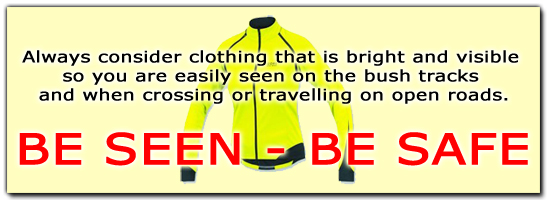 |
| Anti Friction Cream
Saddle sores and hotspots are basically a friction caused skin ailment found around the buttocks, inner thighs, perineum and other private bits south of the border on cyclists. The formation of hotspots are greatly reduced by choosing the right seat, a proper bike set up, a good pair of well fitting cycling shorts, and correct posture, but even with all these safeguards, a lot of friction, moisture, heat, pain etc can still develop from the extended time on the saddle. Add one more weapon to your arsenal to combat saddle soreness – bring along a supply of anti friction cream. |
|
|
Eye Protection Always wear eye protection such as sunglasses to avoid damage to your eyes from the sun, wind, dust, stones, branches and insects. Cycle glasses with interchangeable lenses may also prove to be worth the investment.
Gloves Gloves are a valuable addition as they protect your hands from blisters; prevent the compression of nerves in your hands; and, in the event of a fall, save your skin. Footwear Wear sturdy comfortable shoes. Specific cycling shoes are not essential, but they do make pedalling more efficient. Socks Lightweight cotton socks. Changing your socks a couple of times a day will help to keep your feet dry and healthy. Sweat Headband A headband such as the Halo or Headsweats will help to keep the sweat out of your eyes and will also help to keep your head cool on hot days. |
|
|
Hydration
It is very important to be vigilant in watching for signs of dehydration. There will be regular feed stations along the trail so drink up. |
|
For expert advise, visit any of the four Perth stores of our event supporter The Bicycle Entrepreneur.
